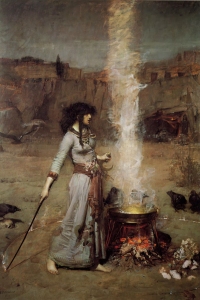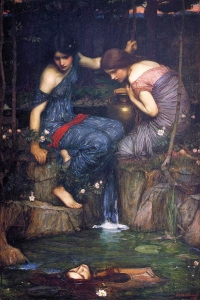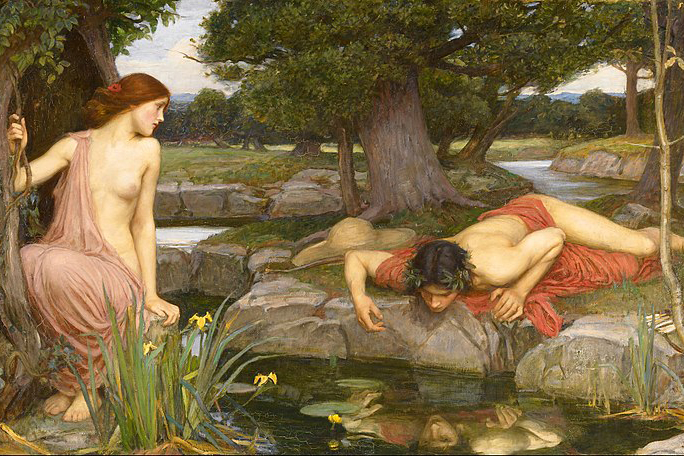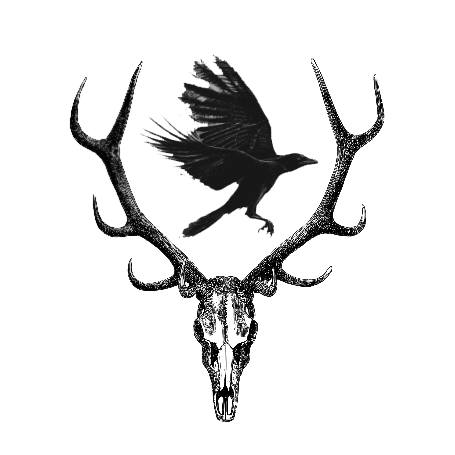All art by John William Waterhouse, 1849 - 1917

Science tells us that of all the five senses, that of Touch or Feeling was the original—the fundamental sense. All the rest are held to be but modifications of, and specialized forms of, this original sense of feeling. I am telling you this not merely in the way of interesting and instructive scientific information, but also because an understanding of this fact will enable you to more clearly comprehend that which I shall have to say to you about the higher faculties or senses.

Many of the very lowly and simple forms of animal life have this one sense only, and that but poorly developed. The elementary life form "feels" the touch of its food, or of other objects which may touch it. The plants also have something akin to this sense, which in some cases, like that of the Sensitive Plant, for instance, is quite well developed.
Long before the sense of sight, or the sensitiveness to light appeared in animal-life, we find evidences of taste, and something like rudimentary hearing or sensitiveness to sounds. Smell gradually developed from the sense of taste, with which even now it is closely connected. In some forms of lower animal life the sense of smell is much more highly developed than in mankind. Hearing evolved in due time from the rudimentary feeling of vibrations. Sight, the highest of the senses, came last, and was an evolution of the elementary sensitiveness to light.

But, you see, all these senses are but modifications of the original sense of feeling or touch. The eye records the touch or feeling of the light-waves which strike upon it. The ear records the touch or feeling of the sound-waves or vibrations of the air, which reach it. The tongue and other seats of taste record the chemical touch of the particles of food, or other substances, coming in contact with the taste-buds. The nose records the chemical touch of the gases or fine particles of material which touch its mucous membrane. The sensory-nerves record the presence of outer objects coming in contact with the nerve ends in various parts of the skin of the body. You see that all of these senses merely record the contact or "touch" of outside objects....
All occultists know that man has other senses than the ordinary five, although but few men have developed them sufficiently well to use them effectively. These super-physical senses are known to the occultists as "the astral senses." The term "Astral," used so frequently by all occultists, ancient and modern, is derived from the Greek word "astra," meaning "star." It is used to indicate those planes of being immediately above the physical plane. The astral senses are really the counterparts of the physical senses of man, and are connected with the astral body of the person just as the physical senses are connected with the physical body.
The office of these astral senses is to enable the person to receive impressions on the astral plane, just as his physical senses enable him to receive impressions on the physical plane. On the physical plane the mind of man receives only the sense impressions of the physical organs of sense; but when the mind functions and vibrates on the astral plane, it requires astral senses in order to receive the impressions of that plane, and these, as we shall see, are present.
The office of these astral senses is to enable the person to receive impressions on the astral plane, just as his physical senses enable him to receive impressions on the physical plane. On the physical plane the mind of man receives only the sense impressions of the physical organs of sense; but when the mind functions and vibrates on the astral plane, it requires astral senses in order to receive the impressions of that plane, and these, as we shall see, are present.

Each one of the physical senses of man has its astral counterpart. Thus man has, in latency, the power of seeing, feeling, tasting, smelling, and hearing, on the astral plane, by means of his five astral senses. More than this, the best occultists know that man really has seven physical senses instead of but five, though these two additional senses are not unfolded in the case of the average person (though occultists who have reached a certain stage are able to use them effectively). Even these two extra physical senses have their counterparts on the astral plane.
Persons who have developed the use of their astral senses are able to receive the sense impressions of the astral plane just as clearly as they receive those of the physical plane by means of the physical senses. For instance, the person is thus able to perceive things occurring on the astral plane; to read the Akashic Records of the past; to perceive things that are happening in other parts of the world; to see past happenings as well; and in cases of peculiar development, to catch glimpses of the future, though this is far rarer than the other forms of astral sight.
Again, by means of clairaudience, the person may hear the things of the astral world, past as well as present, and in rare cases, the future. The explanation is the same in each case—merely the receiving of vibrations on the astral plane instead of on the physical plane. In the same way, the astral senses of smelling, tasting, and feeling operate. But though we have occasional instances of astral feeling, in certain phases of psychic phenomena, we have practically no manifestation of astral smelling or tasting, although the astral senses are there ready for use. It is only in instances of traveling in the astral body that the last two mentioned astral senses, viz., smell and taste, are manifested.

The phenomena of telepathy, or thought transference, occurs on both the physical and the mental plane. On the physical plane it is more or less spontaneous and erratic in manifestation; while on the astral plane it is as clear, reliable and responsive to demand as is astral sight, etc.The ordinary person has but occasional flashes of astral sensing, and as a rule is not able to experience the phenomenon at will.
The trained occultist, on the contrary, is able to shift from one set of senses to the other, by a simple act or effort of will, whenever he may wish to do so. Advanced occultists are often able to function on both physical and astral planes at the same time, though they do not often desire to do so. To vision astrally, the trained occultist merely shifts his sensory mechanism from physical to astral, or vice versa, just as the typewriter operator shifts from the small-letter type to the capitals, by simply touching the shift-key of his machine.
The trained occultist, on the contrary, is able to shift from one set of senses to the other, by a simple act or effort of will, whenever he may wish to do so. Advanced occultists are often able to function on both physical and astral planes at the same time, though they do not often desire to do so. To vision astrally, the trained occultist merely shifts his sensory mechanism from physical to astral, or vice versa, just as the typewriter operator shifts from the small-letter type to the capitals, by simply touching the shift-key of his machine.

Many persons suppose that it is necessary to travel on the astral plane, in the astral body, in order to use the astral senses. This is a mistake. In instances of clairvoyance, astral visioning, psychometry, etc., the occultist remains in his physical body, and senses the phenomena of the astral plane quite readily, by means of the astral senses, just as he is able to sense the phenomena of the physical plane when he uses the physical organs—quite more easily, in fact, in many instances. It is not even necessary for the occultist to enter into the trance condition, in the majority of cases. Travel in the astral body is quite another phase of occult phenomena, and is far more difficult to manifest. The student should never attempt to travel in the astral body except under the instruction of some competent instructor.

In Crystal Gazing, the occultist merely employs the crystal in order to concentrate his power, and to bring to a focus his astral vision. There is no supernatural virtue in the crystal itself—it is merely a means to an end; a piece of useful apparatus to aid in the production of certain phenomena. In Psychometry some object is used in order to bring the occulist "en rapport" with the person or thing associated with it.
But it is the astral senses which are employed in describing either the past environment of the thing, or else the present or past doings of the person in question, etc. In short, the object is merely the loose end of the psychic ball of twine which the psychometrist proceeds to wind or unwind at will. Psychometry is merely one form of astral seeing; just as is crystal gazing.
But it is the astral senses which are employed in describing either the past environment of the thing, or else the present or past doings of the person in question, etc. In short, the object is merely the loose end of the psychic ball of twine which the psychometrist proceeds to wind or unwind at will. Psychometry is merely one form of astral seeing; just as is crystal gazing.
Written by William Walker Atkinson

